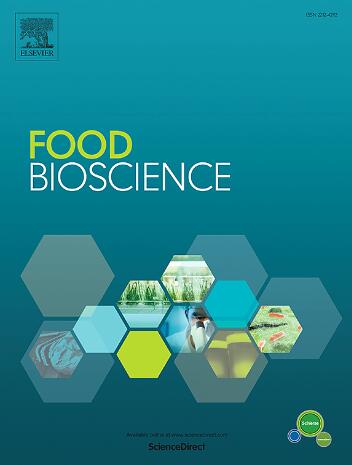Phytic acid: biosynthesis, functional attributes and conventional vis-a-vis modern approaches for reduction
IF 4.8
1区 农林科学
Q1 FOOD SCIENCE & TECHNOLOGY
引用次数: 0
Abstract
Phytic acid is plant-based organic phosphorus stored during maturation. It serves a dual purpose in plant tissues by acting as storage for phosphorus and regulates various cellular processes. From a nutritional perspective, chelating ability of phytic acid is considered as a potential health drawback, while in other ways as a most valuable trait. Phytic acid accumulates in seeds during their developmental stages and is synthesized through two distinct pathways i.e. one is independent of lipids and the other is dependent on lipids. Beginning with a simple precipitation method involving the formation of insoluble ferric phytate in an acidic solution, the methods for quantifying phytic acid have evolved over time to encompass various instrumental approaches, including colorimetry, high-performance ionic chromatography, and high-performance liquid chromatography. Enzymatic reduction using phytases plays a crucial role in converting phytic acid into different inositol phosphates and inorganic phosphorus. Decreasing the phytic acid content in cereal grains is a desirable objective for development of genetically improved crops, which are used in food and feed applications. Phytic acid is not a foe as it has been shown in literature studies. It performs various metabolic functions as well as acts as a reservoir of nutrients for plants and animals. This review explores the advantages and disadvantages of phytic acid, its accumulation, estimation, and reduction using modern tools of genome editing, such as transcription activator-like effector nucleases (TALEN), zinc-finger nucleases (ZFN), and clustered regularly interspaced short palindromic repeats with CRISPR-associated protein 9 (CRISPR/Cas9).

植酸:生物合成,功能属性和传统的相对于现代的还原方法
植酸是在成熟过程中储存的植物性有机磷。它在植物组织中有双重作用,作为磷的储存和调节各种细胞过程。从营养学的角度来看,植酸的螯合能力被认为是一个潜在的健康缺陷,而在其他方面是一个最有价值的特性。植酸在种子发育阶段积累,并通过两种不同的途径合成,即一种不依赖于脂质,另一种依赖于脂质。从一种简单的沉淀法开始,在酸性溶液中形成不溶的植酸铁,随着时间的推移,定量植酸的方法已经发展到包括各种仪器方法,包括比色法、高效离子色谱法和高效液相色谱法。植酸酶在将植酸转化为不同的肌醇磷酸盐和无机磷的过程中起着至关重要的作用。降低谷物中植酸的含量是开发用于食品和饲料的转基因作物的理想目标。植酸并不像文献研究显示的那样是一种敌人。它执行各种代谢功能,并作为植物和动物的营养储存库。本文综述了植酸的优点和缺点,以及利用现代基因组编辑工具,如转录激活因子样效应核酸酶(TALEN)、锌指核酸酶(ZFN)和CRISPR相关蛋白9 (CRISPR/Cas9)聚集规律间隔的短回语重复序列,对植酸的积累、估计和还原进行了探讨。
本文章由计算机程序翻译,如有差异,请以英文原文为准。
求助全文
约1分钟内获得全文
求助全文
来源期刊

Food Bioscience
Biochemistry, Genetics and Molecular Biology-Biochemistry
CiteScore
6.40
自引率
5.80%
发文量
671
审稿时长
27 days
期刊介绍:
Food Bioscience is a peer-reviewed journal that aims to provide a forum for recent developments in the field of bio-related food research. The journal focuses on both fundamental and applied research worldwide, with special attention to ethnic and cultural aspects of food bioresearch.
 求助内容:
求助内容: 应助结果提醒方式:
应助结果提醒方式:


